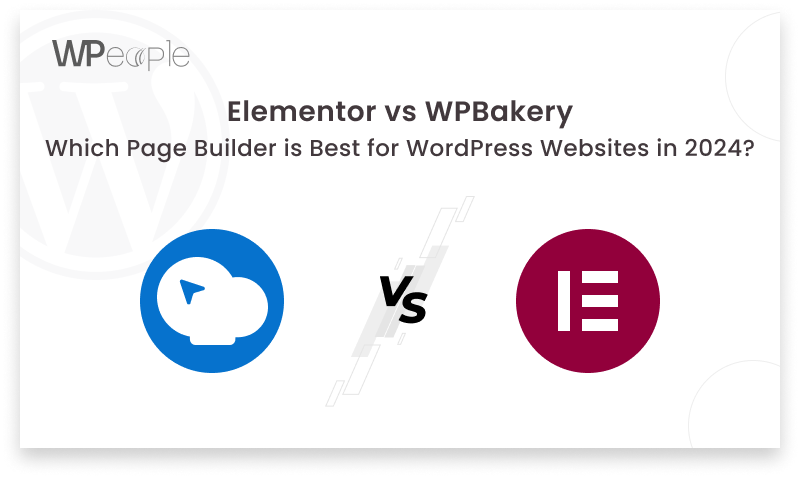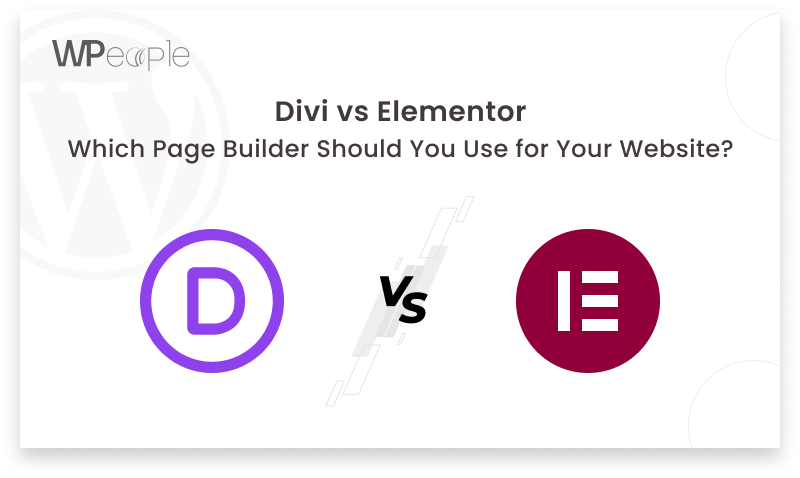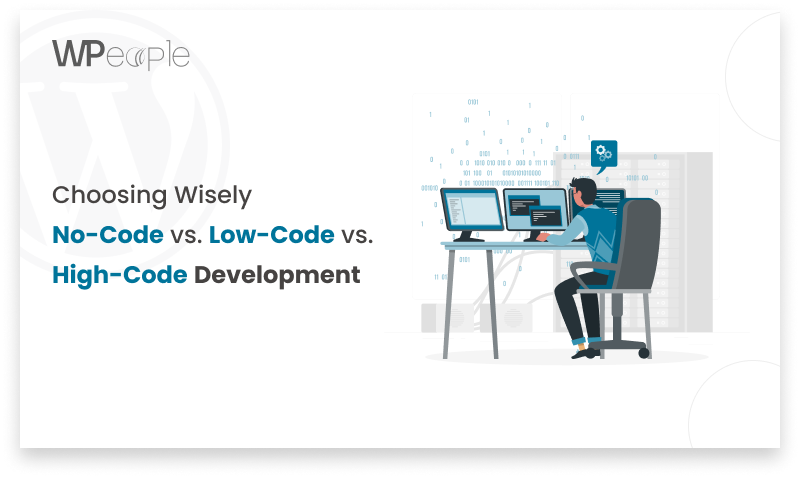
Swift Overview Feeling unsure about no-code, low-code, or high-code for your project? Our guide covers each method thoroughly. High-code involves manual coding for flexibility but requires expertise. Low-code streamlines development with visual tools, ideal for agile projects. No-code simplifies creation without coding, perfect for rapid prototyping. Understand these options to choose the best fit for your project’s needs and resources.
High Code?
High code is a term used in software development to describe the traditional method of writing code from scratch using programming languages and development tools. Unlike low-code or no-code platforms, which offer visual interfaces or pre-built components to streamline application development, high-code involves manual coding by skilled developers.
Here are some key aspects of high code:
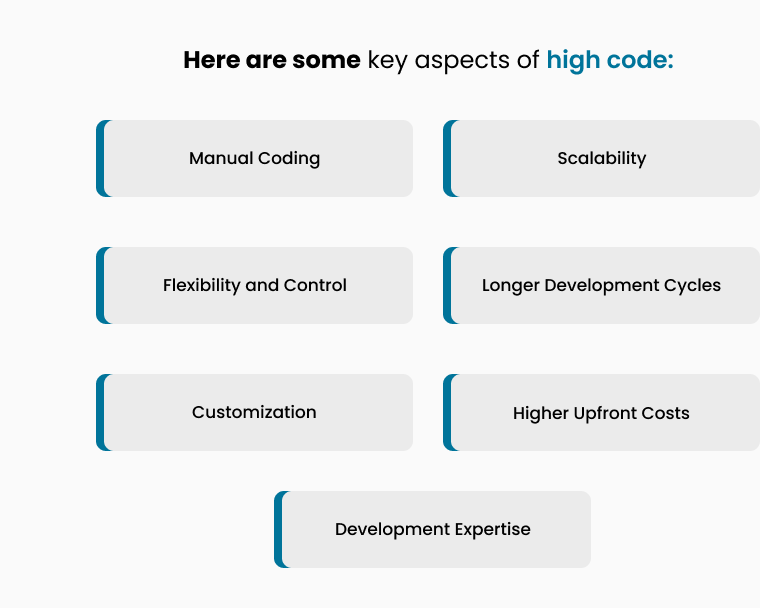
Manual Coding: In high-code development, developers write code line by line, following programming languages’ syntax and rules. This process involves understanding the project requirements, designing the software architecture, implementing algorithms, and handling data management.
Flexibility and Control: High code offers developers unparalleled flexibility and control over the software’s behavior, features, and performance. Since developers write code from scratch, they can tailor the application to meet specific business needs, integrate with external systems, and optimize performance.
Customization: High code is well-suited for projects that require extensive customization and complex functionality. Developers can create custom algorithms, user interfaces, data models, and integrations, ensuring that the software meets unique requirements and performs optimally in various scenarios.
Scalability: High-code applications are often highly scalable, allowing them to accommodate growing user bases, increased data volumes, and evolving business needs. Developers can design scalable architectures, optimize code efficiency, and implement best practices to ensure that the application scales effectively over time.
Development Expertise: High-code development requires a high level of technical expertise and proficiency in programming languages, software design principles, and development tools. Developers must possess in-depth knowledge of coding practices, debugging techniques, and performance optimization strategies to build robust and efficient applications.
Longer Development Cycles: Compared to low-code or no-code development, high-code projects typically have longer development cycles. Writing code from scratch requires careful planning, thorough testing, and iterative refinement, which can extend project timelines. However, this investment in time often results in a higher quality, more robust software product.
Higher Upfront Costs: High-code development may entail higher upfront costs due to the need for skilled developers and longer development cycles. Organizations may need to invest in hiring experienced developers, training resources, and development tools to support high-code projects effectively.
What is Low Code?
Low code is a software development approach that emphasizes visual, declarative techniques to enable the rapid development of applications with minimal hand-coding. In essence, low-code platforms provide developers with graphical interfaces and pre-built components to streamline the application development process, reducing the need for manual coding.
Here are some key characteristics of low code:
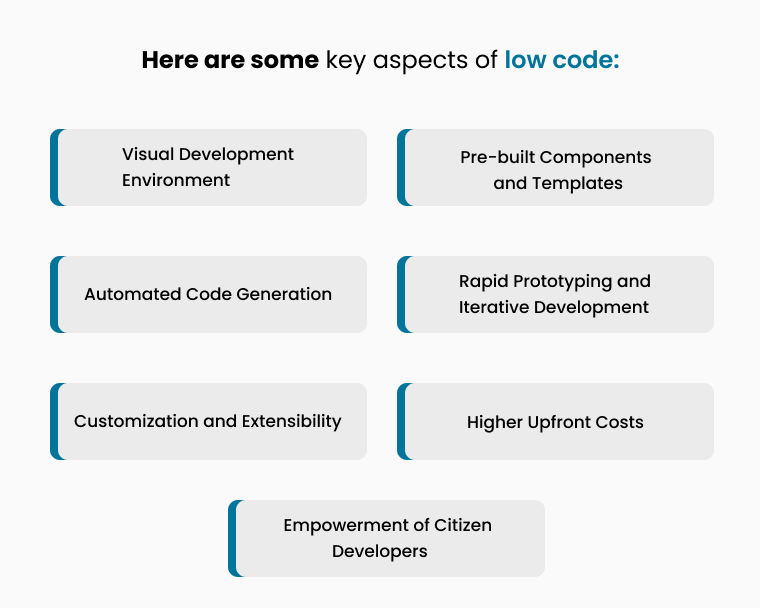
1. Visual Development Environment: Low-code platforms typically offer visual development environments where developers can design, configure, and assemble application components using drag-and-drop interfaces, visual editors, and point-and-click tools. This approach abstracts away much of the complexity of traditional coding, allowing developers to focus on designing the application’s logic and functionality.
2. Pre-built Components and Templates: Low-code platforms often come with a library of pre-built components, modules, and templates that developers can leverage to accelerate development. These components may include user interface elements, data models, integrations, and business logic, enabling developers to quickly assemble applications by configuring and customizing existing building blocks.
3. Automated Code Generation: Low-code platforms generate underlying code automatically based on the visual designs and configurations made by developers. This automated code generation reduces the amount of manual coding required, speeding up the development process and minimizing the potential for coding errors.
4. Rapid Prototyping and Iterative Development: Low-code development enables rapid prototyping and iterative development cycles, allowing developers to quickly build, test, and iterate on application prototypes. This agile approach facilitates collaboration between developers, stakeholders, and end-users, enabling faster feedback and refinement of the application’s features and functionality.
5. Customization and Extensibility: While low-code platforms offer pre-built components and templates, they also provide flexibility for developers to customize and extend these components as needed. Developers can add custom business logic, integrate with external systems, and tailor the user interface to meet specific requirements, ensuring that the resulting application aligns with the organization’s unique needs.
6. Empowerment of Citizen Developers: Low-code platforms empower citizen developers, who may have limited coding experience, to participate in the application development process. With intuitive visual tools and guided development workflows, citizen developers can contribute to building applications, prototypes, and automation workflows without extensive programming knowledge.
Overall, low code offers a powerful and efficient approach to software development, enabling organizations to accelerate application delivery, reduce development costs, and empower a broader range of stakeholders to participate in the development process. By leveraging the capabilities of low-code platforms, organizations can innovate more rapidly, respond to changing market demands, and deliver value to their customers more effectively.
What is No-Code?
No-code is a software development approach that enables individuals to create applications without writing traditional programming code. It allows users, including non-technical professionals and citizen developers, to build software solutions using visual development tools and intuitive interfaces, often through drag-and-drop functionality and configuration rather than writing code manually.
Here are some key features and characteristics of no-code development:
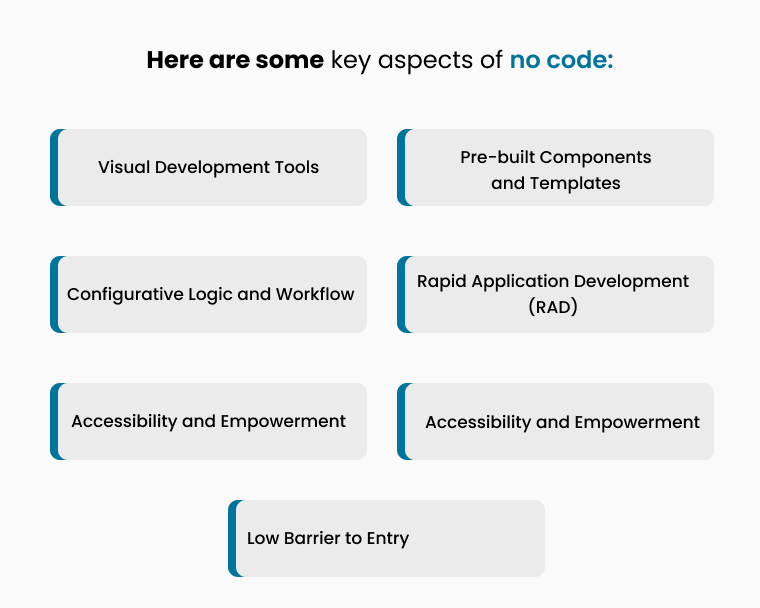
1. Visual Development Tools: No-code platforms provide visual development environments where users can design, customize, and assemble applications using graphical interfaces. These tools typically include drag-and-drop builders, form builders, workflow editors, and other visual elements that simplify the development process.
2. Pre-built Components and Templates: No-code platforms offer a library of pre-built components, templates, and modules that users can leverage to create applications quickly. These components may include user interface elements, data models, database connectors, integrations with third-party services, and more.
3. Configurative Logic and Workflow: Instead of writing code, users configure the logic and workflow of their applications using visual editors and rule-based systems. This allows users to define conditions, triggers, actions, and workflows through intuitive interfaces, without needing to understand programming languages or syntax.
4. Rapid Application Development (RAD): No-code development enables rapid prototyping and iterative development cycles, allowing users to create, test, and iterate on applications quickly. This agile approach facilitates collaboration, experimentation, and feedback loops, accelerating the delivery of software solutions.
5. Accessibility and Empowerment: No-code platforms democratize software development by making it accessible to a broader audience, including non-technical users, business analysts, and subject matter experts. By removing the barrier of coding expertise, these platforms empower individuals to participate in the development process and bring their ideas to life.
6. Scalability and Flexibility: While no-code platforms offer simplicity and ease of use, they also provide scalability and flexibility for building complex applications. Users can create sophisticated workflows, integrate with external systems, and customize the user experience to meet specific business requirements, all without writing code.
7. Low Barrier to Entry: No-code development lowers the barrier to entry for creating software, allowing individuals and organizations to innovate and experiment without the need for extensive technical skills or resources. This democratization of software creation fosters creativity, innovation, and entrepreneurship in various domains and industries.
Overall, no-code development offers a user-friendly and efficient approach to building software solutions, enabling rapid innovation, collaboration, and digital transformation across organizations of all sizes and sectors. By leveraging the capabilities of no-code platforms, users can prototype, deploy, and iterate on applications faster, driving business agility and competitiveness in today’s digital landscape.
When to Opt for High-Code Development?
High-code development involves crafting custom applications through handwritten code, providing superior flexibility and extensibility. Consider opting for a high-code approach when:
- Your project demands an enterprise-grade application.
- You require specific features and functionalities tailored to your needs.
- Your company seeks a highly customizable application.
- Integration with advanced technologies like AI is essential.
- You’re building a feature-rich eCommerce application requiring advanced functionalities.
When to Opt for No-Code Platforms?
No-code platforms are versatile and suitable for various scenarios, such as building single-page websites, creating simple apps with limited technical expertise, or developing internal service APIs. Choose a no-code approach when:
- You’re aiming to develop single-page websites efficiently.
- You prefer building apps without relying heavily on technical skills.
- Your team lacks extensive IT resources and experience.
- Your company requires internal service APIs.
- You want to develop applications to enhance your business operations.
When to Consider Low-Code Platforms?
In the comparison of low-code vs high-code, the low-code approach offers ready-made code templates, tools, and features, eliminating the need for extensive manual coding. It’s an excellent choice for businesses aiming to develop applications quickly with minimal coding requirements. Opt for a low-code development approach when:
- Your team comprises semi-skilled developers.
- You’re a startup seeking to rapidly build and launch an app.
- Your priority is swift app development with limited customization needs.
- You prefer visual-driven development features for building apps.
- Your company needs to create external APIs or integrate data.
Conclusion
At WPeople, we’ve explored the intricate landscape of software development methodologies, dissecting the nuances between no-code, low-code, and high-code approaches. Through a comprehensive analysis, we’ve shed light on the benefits, capabilities, and ideal use cases of each methodology, empowering decision-makers to navigate the complexities of software development with confidence.
From the unparalleled control and flexibility of high-code development to the rapid prototyping and accessibility of no-code platforms, each approach offers unique advantages tailored to diverse project requirements and objectives. By understanding the strengths and limitations of each methodology, businesses can make informed decisions that align with their goals, resources, and timelines.
Whether you’re a startup seeking agility and speed or an enterprise striving for scalability and customization, WPeople is here to guide you through the maze of software development options. Our team of experts is dedicated to delivering tailored solutions that drive innovation, efficiency, and success in your projects.
In essence, this article serves as a compass for those navigating the no-code vs. low-code vs. high-code dilemma, providing clarity and insight into the optimal approach for your next software development endeavor. With WPeople by your side, you can embark on your software journey with confidence, knowing that you have the expertise and support to turn your vision into reality.
Consult with Our WordPress Experts On:
- WooCommerce Store
- Plugin Development
- Support & maintenance


